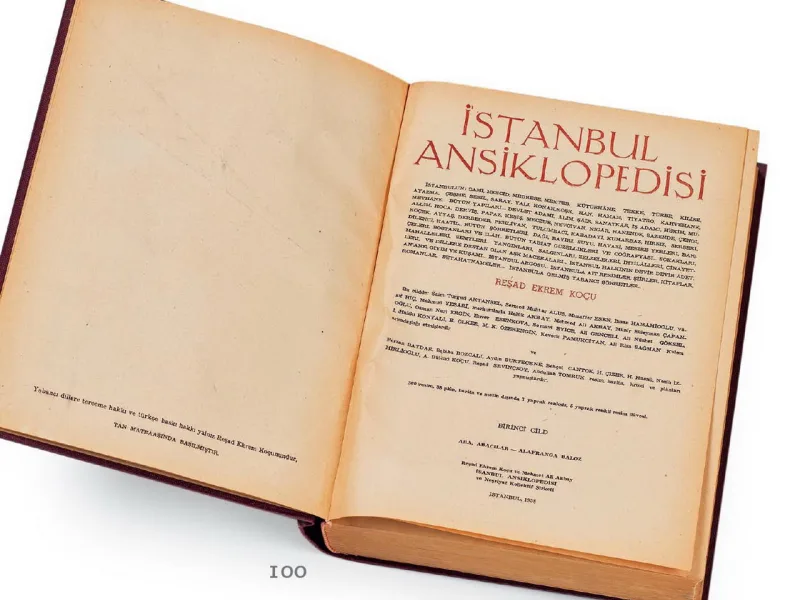Few works in Turkish cultural history blur the boundary between scholarship and personal obsession as vividly as Reşad Ekrem Koçu’s İstanbul Ansiklopedisi (Encyclopedia of Istanbul). Begun in 1944 and left unfinished three decades later, the encyclopedia was envisioned as a definitive record of the city but grew into something far more eccentric: a mosaic of forgotten trades, neighborhood stories, eccentric characters, gossip, and visual vignettes that together form a literary artwork as much as a reference book. With its carefully commissioned illustrations, playful anecdotes, and sometimes startlingly intimate entries, the Encyclopedia reflects both the grandeur of Istanbul and the peculiar fascinations of its author. Today it stands not only as an archive of the city but also as a unique artistic artifact, half encyclopedia, half portrait of one man’s imagination.
The Author: Reşad Ekrem Koçu
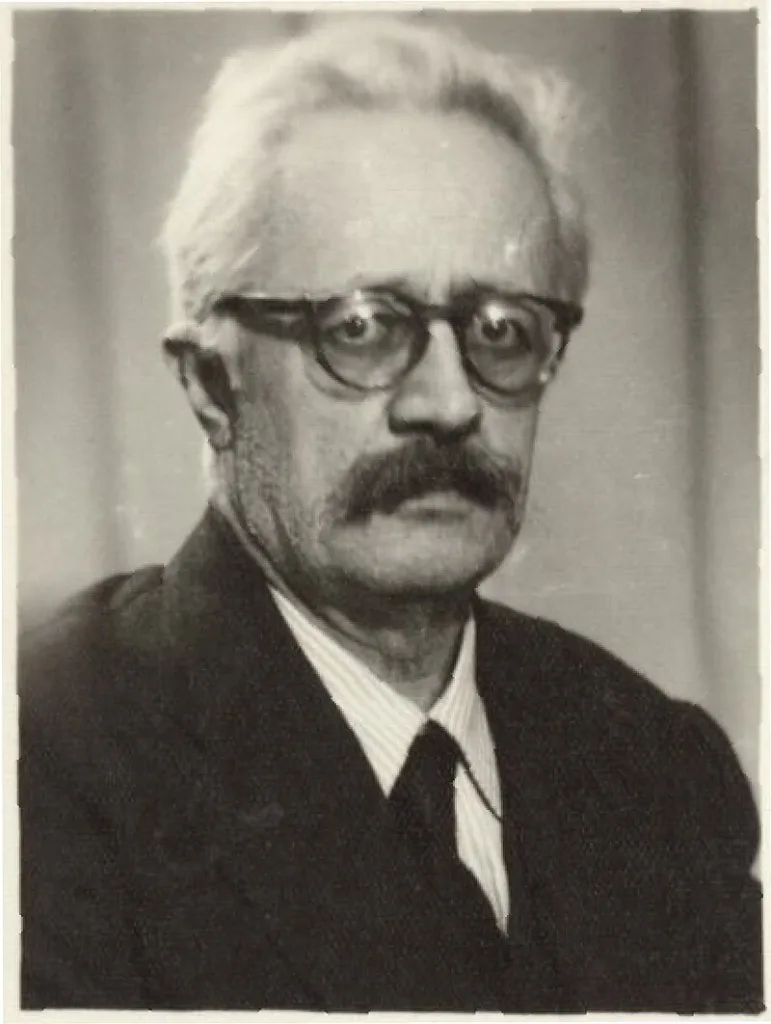
Reşad Ekrem Koçu
Reşad Ekrem Koçu (1905–1975) was a historian, novelist, and essayist known for his engaging style and ability to bring Ottoman history to life for general audiences. A graduate of Istanbul University, he taught history and became a prolific writer, publishing both popular history books and fictionalized accounts of Ottoman life. Unlike many of his academic contemporaries, Koçu combined archival knowledge with a fascination for the marginal, the anecdotal, and the sensational qualities that gave his writing immense color but also raised questions about subjectivity.
The Encyclopedia and Its Content
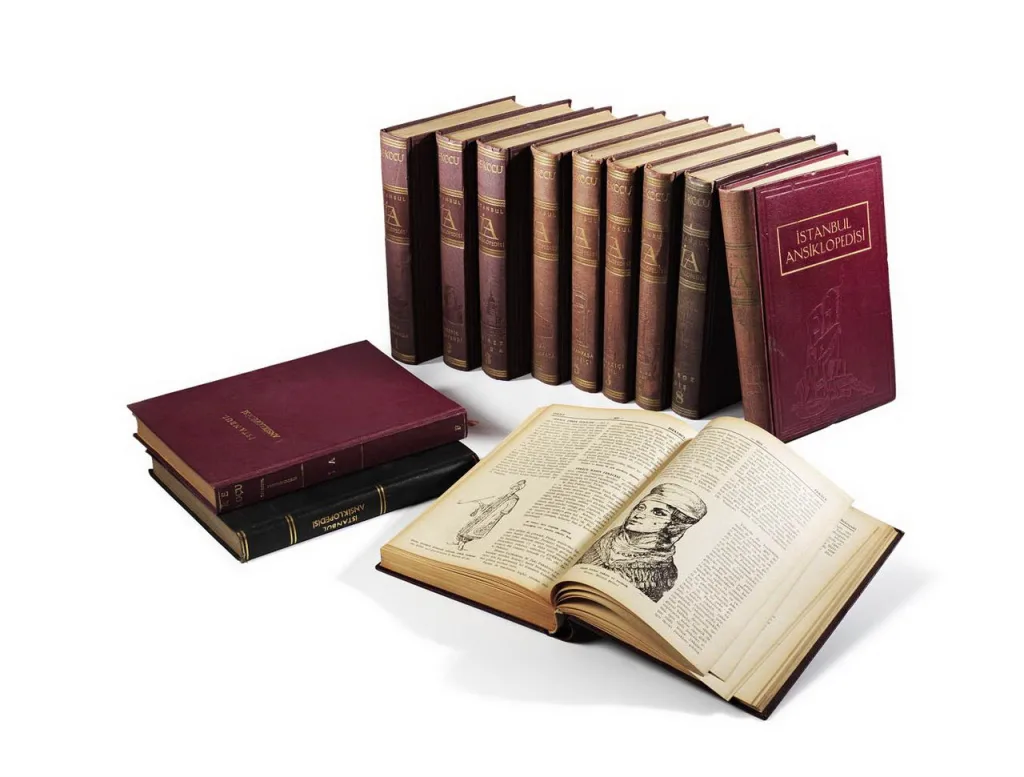
The original volumes of Encyclopedia of Istanbul can only be found on auction houses
The İstanbul Ansiklopedisi was launched in 1944 as a serial publication, intended to cover Istanbul alphabetically through entries. It combined traditional encyclopedic aims with an almost novelistic accumulation of details. The content ranges widely:
- Streets, neighborhoods, mosques, fountains, and coffeehouses.
- Forgotten trades such as tulumbacılar (firefighters), kayıkçılar (boatmen), and esnaf (guilds).
- Biographies of both famous figures and obscure personalities.
- Everyday customs, entertainment, and oral traditions.
Illustrations, commissioned from artists like Mehmet Ali Laga and contemporary engravers, accompanied many entries, giving the volumes a distinctive visual identity.
Compilation and Method
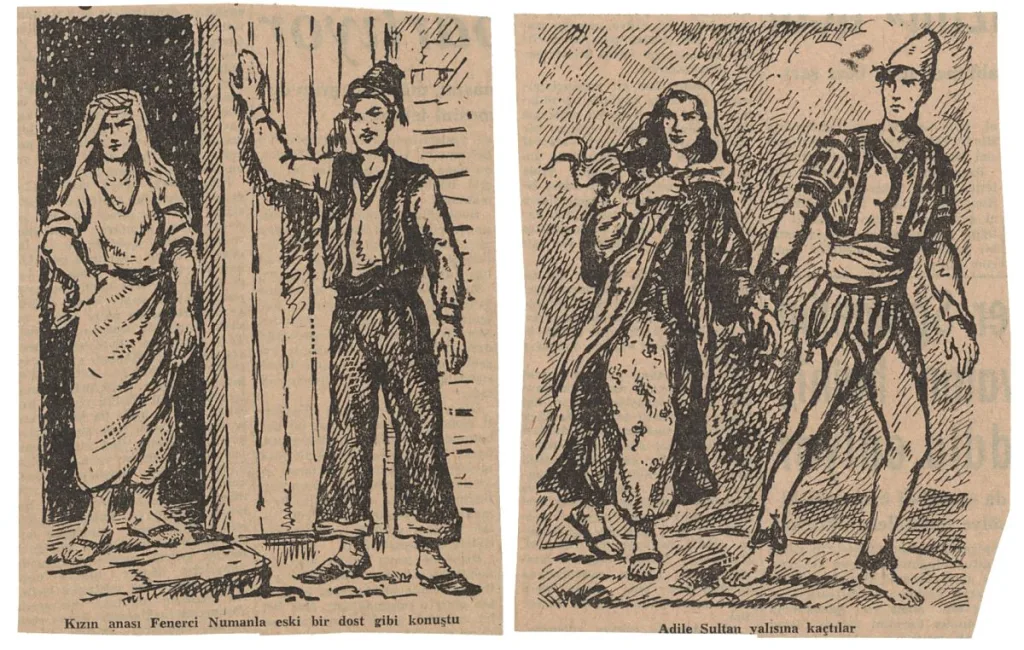
“Hürmüz (Vişnezadeli Benli)”
Kadir Has University Information Center – Salt Research, Reşad Ekrem Koçu and Istanbul Encyclopedia Archive
Unlike institutional encyclopedias, Koçu’s work was highly personal. He compiled information through archival research, oral accounts, personal memories, gossip, and hearsay. He frequently included anecdotes told to him in coffeehouses or remembered from childhood. This blending of scholarship and folklore gave the encyclopedia a unique vitality but also limited its claims to objectivity.
The İstanbul Ansiklopedisi was originally planned for 24 volumes, but only 11 volumes were published covering entries A–G. These 11 volumes were compiled from 173 fascicles released between 1944 and 1973. The remaining volumes (G–Z) were never completed, though the unpublished drafts and notes exist in the archive at Kadir Has University. So, the work remained unfinished due to financial difficulties, political changes, and his own perfectionism.
Domestic and Foreign Repercussions
Domestically, the encyclopedia functioned as a living archive of Istanbul in transition, recording the city’s Ottoman heritage at a time when modernization was erasing many older structures and traditions. It preserved details that would otherwise have vanished; trades, minor streets, and forgotten characters.
Externally, the work baffled and fascinated contemporary critics. Some hailed it as an invaluable cultural monument; others dismissed it as eccentric, gossipy, and indulgent. Its hybrid nature, half scholarship, half storytelling, placed it outside the conventions of academic history, but also gave it lasting literary appeal.
Koçu’s Special Fascinations: Young Boys and Gendered Subcultures
One of the more controversial aspects of the encyclopedia lies in the reflection of Koçu’s personal interests, especially his fixation on male youth. Scholars have noted that Koçu repeatedly lingered on subjects involving adolescent boys, apprentices, and the homoerotic undertones of Ottoman entertainment traditions.
- Köçek dancers: Male youths dressed as women who performed in Ottoman festivities are described at unusual length, often with a focus on their beauty and allure.
- Delikanlı culture: Koçu devoted entire entries to the swagger, style, and attractiveness of street boys, presenting them as a defining social type in Istanbul.
- Apprentices and wrestlers: Otherwise minor figures, errand boys, wrestlers, apprentices; were treated with disproportionate attention, again emphasizing their appearance.
These fascinations blur the line between cultural record and personal fantasy. For modern readers, they reveal both a valuable archive of Ottoman gender history and a problematic fixation on adolescent masculinity. Cultural critics such as Berna Moran and later commentators have described this as central to Koçu’s imaginative world: it is part of what gives the encyclopedia its texture, but also its unease.
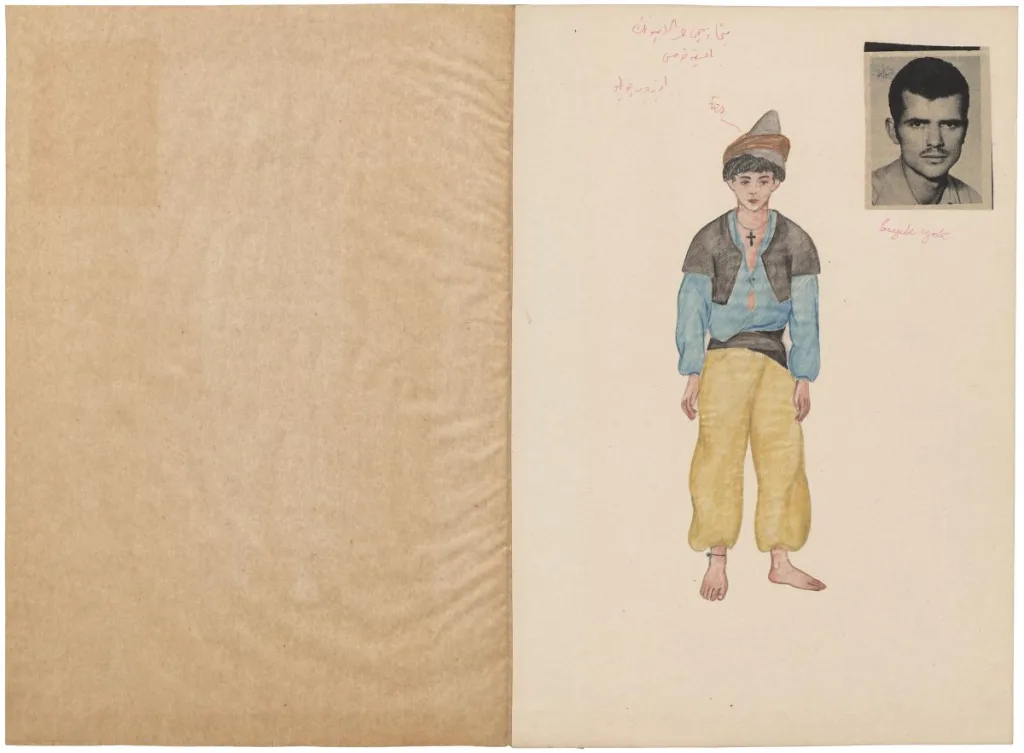
Above is an archival sketch, one of many figurative works that complemented Koçu’s narrative. This visual element reflects how he built the encyclopedia as both text and image, blending sources, sketches, and aesthetics.
Sample Entries Illustrating Koçu’s Fascination with Boys and Youth
“Delikanlı”
Excerpt (translated & summarized):
Koçu cites Büyük Türk Lügâtı to define delikanlı as “a young man whose blood is boiling; from puberty to age 25, at his most passionate, energetic, beautiful stage.” In Ottoman poetic culture, delikanlıs are celebrated for their beauty, grace, pride, charm, and love. Poets favored alternative names; “civân,” “nevhat,” “mürâhik,” “tâze,” “şehbaz,” “şehlevend,” “köçek,” “bıçkın,” “çapkın,” and more, to evoke male beauty. Descriptions can extend from the curl of the hair to the toe, and there were popular verse portraits (“Şehrengiz”) and dramatic confessions like Defteri Aşk or Nevhatül Uşşâk devoted to such youth.
“Lâtif (Köçek)”
Excerpt (translated & summarized):
Lâtif was a well-known köçek (male dancer) in late-18th-century Istanbul. Born Jewish, he was trained from a young age to perform in revels. Though talented, his moral standing declined under corrupt circles’ influence. In 1776, the grand vizier Derviş Mehmed Paşa invited him to court after hearing praise: “Our lord should arrange a helva night and bring the famous köçek Lâtif.” This rumor caused scandal, and the governor was soon dismissed. Nonetheless, court helva nights resumed across Istanbul neighborhoods.
“Muslu (Nallıayazmalı Köçek)”
Excerpt (translated & summarized):
Muslu, known as the “Nallıayazmalı Köçek,” was celebrated for his beauty in mid-16th century Istanbul. He is praised in poet Cemâlî Ahmed’s Şehrengiz.
Contemporary Situation
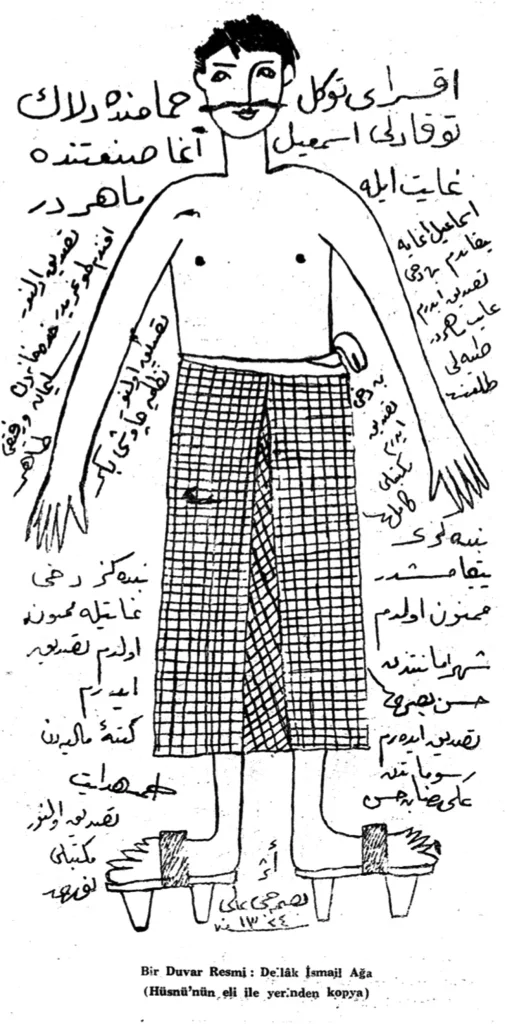
A drawing of İsmail Ağa from the toilet at Muradpaşa Mosque (copied on side by Hüsnü) (Özoğlu, M. (2024). Reading for the future: İstanbul Ansiklopedisi, a collection without origin. Culture, Theory and Critique, 1–19. https://doi.org/10.1080/14735784.2024.2366334)
Today, İstanbul Ansiklopedisi is recognized as a cultural monument despite (and because of) its idiosyncrasies. In recent years, institutions such as SALT and Kadir Has University have digitized the surviving fascicles and archival notes, making the work accessible to researchers and the public. Exhibitions have highlighted both its encyclopedic ambition and its eccentricities, including Koçu’s problematic entries on boys and his obsessive attention to subcultures that mainstream historiography ignored.
For contemporary scholars, the encyclopedia serves multiple roles:
- As an urban archive, preserving details lost in the modernization of Istanbul.
- As a literary artifact, reflecting the imagination of a singular historian-writer.
- As a case study in subjectivity, reminding us how cultural preservation can be shaped by personal desires and biases.
Conclusion
Reşad Ekrem Koçu’s İstanbul Ansiklopedisi is at once a treasure chest of Istanbul’s cultural memory and a deeply personal, controversial project. It resists easy classification: neither strictly academic nor purely literary, it documents the life of a city while revealing the inner world of its author. Its unfinished state, eccentric entries, and ethically complex treatment of male youth make it a subject of ongoing debate. Yet it remains indispensable, an encyclopedia that is also an artwork, a monument both to Istanbul and to the peculiar vision of the man who tried to capture it in words and images.
Further Reading
- Koçu, Reşad Ekrem. İstanbul Ansiklopedisi. Various fascicles (1944–1973). İstanbul.
- Boyar, Ebru & Fleet, Kate. A Social History of Ottoman Istanbul. Cambridge: Cambridge University Press, 2010.
- Öztürkmen, Arzu. “Reşad Ekrem Koçu and His İstanbul Encyclopedia.” In Historians as Public Intellectuals: Essays on Ottoman and Turkish Historiography. Istanbul: Bilgi University Press, 2011.
- Özoğlu, Müge. 2024. “Reading for the Future: İstanbul Ansiklopedisi, a Collection without Origin.” Culture, Theory and Critique, September, 1–19. doi:10.1080/14735784.2024.2366334.
- SALT Research. İstanbul Ansiklopedisi Digital Archive. https://archives.saltresearch.org
- Eldem, Edhem. “An Encyclopedic Obsession: Reşad Ekrem Koçu’s Istanbul.” Toplumsal Tarih (various issues).

